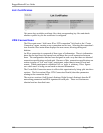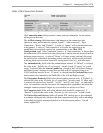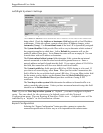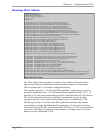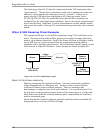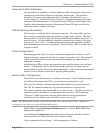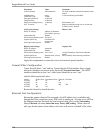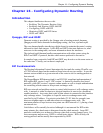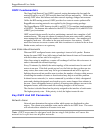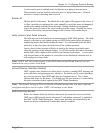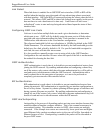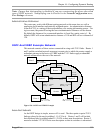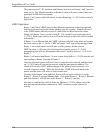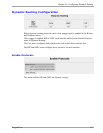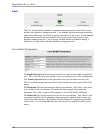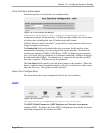
RuggedRouter® User Guide
OSPF Fundamentals
The Open Path Shortest First (OSPF) protocol routing determines the best path for
routing IP traffic over a TCP/IP network based on link cost and quality. Unlike static
routing, OSPF takes link failures and other network topology changes into account.
Unlike the RIP routing protocol, OSPF provides less router to router update traffic.
RuggedRouter routing protocols are supplied by the Quagga routing package.
The RuggedRouter OSPF daemon (ospfd) is an RFC 2178 compliant implementation
of OSPFv2. The daemon also adheres to the RFC2370 (Opaque LSA) and RFC3509
(ABR-Types) extensions.
OSPF network design usually involves partitioning a network into a number of self
contained areas. The areas are chosen to minimize intra-area router traffic, making
more manageable and reducing the number of advertised routes. Area numbers are
assigned to each area. All routers in the area are known as Area routers. If traffic
must flow between two areas a router with links in each area is selected to be an Area
Border router, and serves as a gateway.
Link State Advertisements
When an OSPF configured router starts operating it issues a hello packet. Routers
having the same OSPF Area, hello-interval and dead-interval timers will communicate
with each others and are said to be neighbors
After discovering its neighbors, a router will exchange Link State Advertisements in
order to determine the network topology.
Every 30 minutes (by default) the entire topology of the network must be sent to all
routers in an area. If the link speeds are too low, the links too busy or there are too
many routes, then some routes may fail to get re-announced and will be aged out.
Splitting the network into smaller areas to reduce the number of routes within an area
or reducing the number of routes to be advertised may help to avoid this problem.
In shared access networks (i.e. routers connected by switches or hubs) a designated
router and a backup designated are elected to receive route changes from subnets in
the area. Once a designated router is picked, all routing state changes are sent to the
designated router, which then sends the resulting changes to all the routers.
The election is decided based on the priority assigned to the interface of each router.
The highest priority wins. If the priority is tied, the highest router-id wins.
Key OSPF And RIP Parameters
Network Areas
Network areas determine the regions within which routes are distributed to other
routers. The subnets at a particular router can be added to its OSPF Area. The router
will advertise these subnets to all routers in its area.
Note: OSPF areas must be designed such that no single link failure will cause the
network to be split into two disjoint networks.
152 RuggedCom



